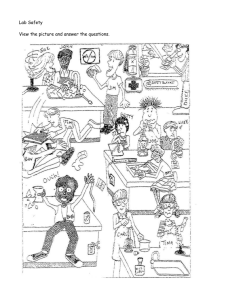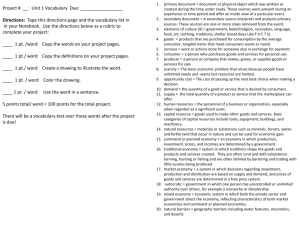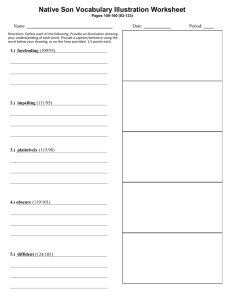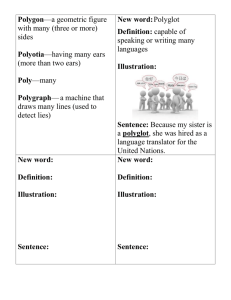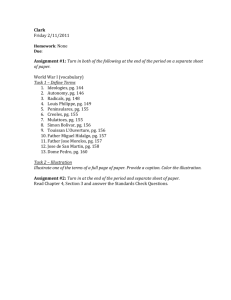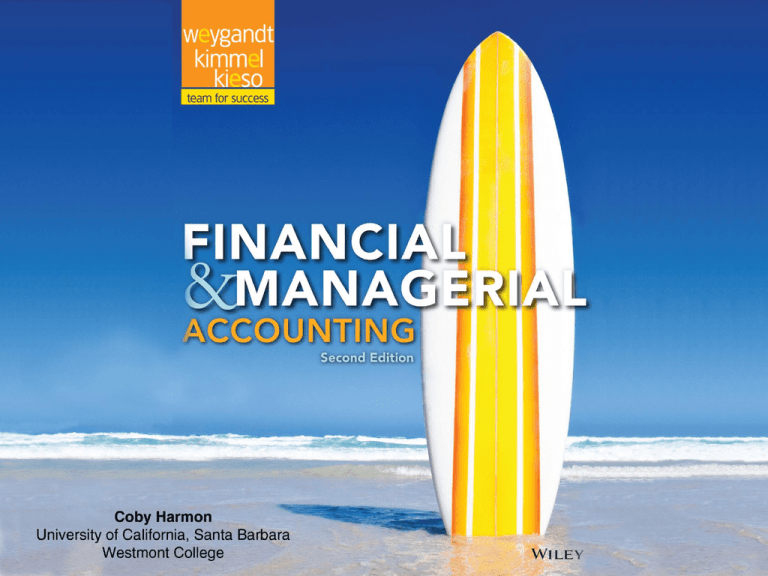
26-1
26
Planning for Capital
Investments
Learning Objectives
26-2
1
Describe capital budgeting inputs and apply the cash payback
technique.
2
Use the net present value method.
3
Identify capital budgeting challenges and refinements.
4
Use the internal rate of return method.
5
Use the annual rate of return method.
LEARNING
OBJECTIVE
1
Describe capital budgeting inputs and apply
the cash payback technique.
Corporate capital budget authorization process:
1. Proposals for projects are requested from each
department.
2. Proposals are screened by a capital budget committee.
3. Officers determine which projects are worthy of funding.
4. Board of directors approves capital budget.
26-3
LO 1
Authorization Process
Many companies follow a carefully prescribed process in
capital budgeting.
Illustration 26-1
Corporate capital budget
authorization process
26-4
LO 1
Cash Flow Information
For purposes of capital budgeting, estimated cash inflows
and outflows are the preferred inputs.
Why?
Ultimately, the value of all financial investments is
determined by the value of cash flows received and paid.
26-5
LO 1
Cash Flow Information
Typical cash flows relating to capital budgeting decisions.
Cash Outflows
Initial investment
Repairs and maintenance
Increased operating costs
Overhaul of equipment
Cash Inflows
Sale of old equipment
Increased cash received from customers
Reduced cash outflows related to operating costs
Salvage value of equipment
26-6
Illustration 26-2
LO 1
Cash Flow Information
Capital budgeting decisions depend on:
1. Availability of funds.
2. Relationships among proposed projects.
3. Company’s basic decision-making approach.
4. Risk associated with a particular project.
26-7
LO 1
Illustrative Data
Stewart Shipping Company is considering an investment of
$130,000 in new equipment.
Illustration 26-3
26-8
LO 1
Cash Payback
Cash payback technique identifies the time period required
to recover the cost of the capital investment from the net
annual cash inflow produced by the investment.
Illustration 26-4
Cash payback period for Stewart is …
$130,000 ÷ $24,000 = 5.42 years
26-9
LO 1
Cash Payback
Shorter payback period = More attractive the investment
In the case of uneven net annual cash flows, the company
determines the cash payback period when the:
Cumulative net
cash flows from
the investment
26-10
=
Cost of the
investment
LO 1
Cash Payback
Illustration: Chen Company proposes an investment in a
new website that is estimated to cost $300,000.
Cash payback should not be the only basis for the
capital budgeting decision as it ignores the
Illustration 26-5
Computation of cash
payback period—
unequal cash flows
expected profitability of the project.
26-11
LO 1
Cash Payback
Question
A $100,000 investment with a zero scrap value has an 8year life. Compute the payback period if straight-line
depreciation is used and net income is determined to be
$20,000.
a. 8.00 years.
b. 3.08 years.
c. 5.00 years.
d. 13.33 years.
26-12
LO 1
DO IT! 1
Cash Payback Period
Watertown Paper Corporation is considering adding another machine
for the manufacture of corrugated cardboard. The machine would
cost $900,000. It would have an estimated life of 6 years and no
salvage value. The company estimates that annual cash inflows
would increase by $400,000 and that annual cash outflows would
increase by $190,000. Compute the cash payback period.
26-13
LO 1
LEARNING
OBJECTIVE
2
Use the net present value method.
Discounted cash flow technique:
Generally recognized as the best approach.
Considers both the estimated total cash inflows and
the time value of money.
26-14
Two methods:
►
Net present value (NPV).
►
Internal rate of return (IRR).
LO 2
Net Present Value (NPV) method
Cash inflows are discounted to their present value and
then compared with the capital outlay required by the
investment.
The interest rate used in discounting is the required
minimum rate of return.
Proposal is acceptable when NPV is zero or positive.
The higher the positive NPV, the more attractive the
investment.
26-15
LO 2
Net Present
Value (NPV)
method
Illustration 26-6
Net present value decision
criteria
Proposal is
acceptable when net
present value is zero
or positive.
26-16
LO 2
Equal Annual Cash Flows
Illustration: Stewart Shipping Company’s annual cash flows are
$24,000. If we assume this amount is uniform over the asset’s
useful life, we can compute the present value of the net annual
cash flows.
Illustration 26-7
Computation of present value
of equal net annual cash flows
26-17
LO 2
Equal Annual Cash Flows
Illustration: Calculate the present value.
Illustration 26-8
Computation of net
present value—equal net
annual cash flows
The proposed capital expenditure is acceptable at a
required rate of return of 12% because the net present
value is positive.
26-18
LO 2
Unequal Annual Cash Flows
Illustration: Stewart Shipping Company expects the
same total net cash flows of $240,000 over the life of the
investment. Because of a declining market demand for
the new product the net annual cash flows are higher in
the early years and lower in the later years.
26-19
LO 2
Unequal Annual Cash Flows
Illustration 26-9
Computation of present value of
unequal annual cash flows
26-20
LO 2
Unequal Annual Cash Flows
Illustration: Calculate the net present value.
Illustration 26-10
Computation of net
present value—unequal
annual cash flows
Proposed capital expenditure is acceptable at a required
rate of return of 12% because the net present value is
positive.
26-21
LO 2
Management Insight
Verizon
Can You Hear Me Me—Better?
What’s better than 3G wireless service? 4G. But the question for
wireless service providers is whether customers will be willing to pay
extra for that improvement. Verizon has spent billions on upgrading
its networks in the past few years, so it now offers 4G LTE service to
97% of the nation. Verizon is hoping that its investment in 4G works
out better than its $23 billion investment in its FIOS fiber-wired
network for TV and ultrahigh-speed Internet. One analyst estimates
that the present value of each FIOS customer is $800 less than the
cost of the connection.
Sources: Martin Peers, “Investors: Beware Verizon’s Generation GAP,” Wall
Street Journal Online (January 26, 2010); and Chad Fraser, “What Warren
Buffett Sees in Verizon,” Investing Daily (May 30, 2014).
26-22
LO 2
Choosing a Discount Rate
In most instances a company uses a required rate of
return equal to its cost of capital — that is, the rate that it
must pay to obtain funds from creditors and
stockholders.
Discount rate has two elements:
Cost of capital
Risk
Rate also know as
required rate of return.
hurdle rate.
cutoff rate.
26-23
LO 2
Choosing a Discount Rate
Illustration: Stewart Shipping used a discount rate of 12%.
Suppose this rate does not take into account the risk of the
project. A more appropriate rate might be 15%.
Illustration 26-11
Comparison of net present values at different discount rates
26-24
LO 2
Simplifying Assumptions
All cash flows come at the end of each year.
All cash flows are immediately reinvested in another
project that has a similar return.
26-25
All cash flows can be predicted with certainty.
LO 2
Net Present Value (NPV) method
Question
Compute the net present value of a $260,000 investment
with a 10-year life, annual cash inflows of $50,000 and a
discount rate of 12%.
a. $(9,062).
b. $22,511.
c. $9,062.
d. $(22,511).
26-26
LO 2
Comprehensive Example
Best Taste Foods is considering investing in new
equipment to produce fat-free snack foods.
Illustration 26-12
Investment information for Best Taste Foods example
26-27
LO 2
Comprehensive Example
Compute the net annual cash flow.
Illustration 26-13
Computation of net annual
cash flow
26-28
LO 2
Comprehensive Example
Compute the net annual cash flow.
Illustration 26-14
Computation of net present
value for Best Taste Foods
investment
26-29
LO 2
DO IT! 2
Net Present Value
Watertown Paper Corporation is considering adding another
machine for the manufacture of corrugated cardboard. The
machine would cost $900,000. It would have an estimated
life of 6 years and no salvage value. The company
estimates that annual cash inflows would increase by
$400,000 and that annual cash outflows would increase by
$190,000. Management has a required rate of return of 9%.
Calculate the net present value on this project and discuss
whether it should be accepted.
26-30
LO 2
DO IT! 2
Net Present Value
Calculate the net present value on this project and discuss
whether it should be accepted.
26-31
LO 2
LEARNING
OBJECTIVE
3
Identify capital budgeting challenges and
refinements.
Intangible Benefits
Intangible benefits might include increased quality,
improved safety, or enhanced employee loyalty.
To avoid rejecting projects with intangible benefits:
1. Calculate net present value ignoring intangible benefits.
2. Project rough, conservative estimates of the value of the
intangible benefits, and incorporate these values into the
NPV calculation.
26-32
LO 3
Intangible Benefits
EXAMPLE - Berg Company is considering
the purchase of a new mechanical robot.
Illustration 26-15
Investment information for
Berg Company example
Based on the negative
net present value of
$30,493, the proposed
project is not
acceptable.
26-33
LO 3
EXAMPLE
Berg estimates that sales will increase cash inflows by
$10,000 annually as a result of an increase in quality.
Berg also estimates that annual cost outflows would be
reduced by $5,000 as a result of lower warranty claims,
reduced injury claims, and missed work.
Using these conservative estimates of the value of the
additional benefits, should Berg accept the project?
26-34
LO 3
EXAMPLE
Berg would accept the project.
26-35
Illustration 26-16
Revised investment information
for Berg Company example,
including intangible benefits
LO 3
Ethics Insight
It Need Not Cost an Arm and a Leg
Most manufacturers say that employee safety matters above everything else.
But how many back up this statement with investments that improve employee
safety? Recently, a woodworking hobbyist, who also happens to be a patent
attorney with a Ph.D. in physics, invented a mechanism that automatically shuts
down a power saw when the saw blade comes in contact with human flesh. The
blade stops so quickly that only minor injuries result. Power saws injure 40,000
Americans each year, and 4,000 of those injuries are bad enough to require
amputation. Therefore, one might think that power-saw companies would be
lined up to incorporate this mechanism into their saws. But, in the words of one
power-tool company, “Safety doesn’t sell.” Since existing saw manufacturers
were unwilling to incorporate the device into their saws, eventually the inventor
started his own company to build the devices and sell them directly to
businesses that use power saws.
Source: Melba Newsome, “An Edgy New Idea,” Time: Inside Business (May 2006), p.
A16.
26-36
LO 3
Profitability Index for Mutually Exclusive
Projects
26-37
Proposals are often mutually exclusive.
Managers often must choose between various
positive-NPV projects because of limited resources.
Tempting to choose the project with the higher NPV.
LO 3
Profitability Index for Mutually Exclusive
Projects
Illustration: Two mutually exclusive projects, each assumed
to have a 10-year life and a 12% discount rate.
Illustration 26-17
Illustration 26-18
26-38
LO 3
Profitability Index for Mutually Exclusive
Projects
Illustration: One method of comparing alternative projects
is the profitability index.
Illustration 26-18
26-39
Illustration 26-20
LO 3
Profitability Index for Mutually Exclusive
Projects
Question
Assume Project A has a present value of net cash inflows of $79,600
and an initial investment of $60,000. Project B has a present value of
net cash inflows of $82,500 and an initial investment of $75,000.
Assuming the projects are mutually exclusive, which project should
management select?
a. Project A.
b. Project B.
c.
Project A or B.
d. There is not enough data to answer the question.
26-40
LO 3
Risk Analysis
A simplifying assumption made by many financial analysts
is that projected results are known with certainty.
Projected results are only estimates.
Sensitivity analysis is used to deal with uncertainty.
►
26-41
Sensitivity analysis uses a number of outcome
estimates to get a sense of the variability among
potential returns.
LO 3
Management Insight
Sharp
Wide-Screen Capacity
Building a new factory to produce 60-inch TV screens can cost $4
billion. But for more than 10 years, manufacturers of these screens have
continued to build new plants. By building so many plants, they have
expanded productive capacity at a rate that has exceeded the demand
for big-screen TVs. In fact, during one recent year, the supply of bigscreen TVs was estimated to exceed demand by 12%, rising to 16% in
the future. One state-of-the-art plant built by Sharp was estimated to be
operating at only 50% of capacity. Experts say that the price of bigscreen TVs will have to fall much further than they already have before
demand may eventually catch up with productive capacity.
Source: James Simms, “Sharp’s Payoff Delayed,” Wall Street Journal Online
(September 14, 2010).
26-42
LO 3
Post-Audit of Investment Projects
Performing a post-audit is important.
26-43
If managers know that their estimates will be
compared to actual results they will be more likely to
submit reasonable and accurate data when making
investment proposals.
Provides a formal mechanism to determine whether
existing projects should be supported or terminated.
Improve future investment proposals.
LO 3
DO IT! 3
Profitability Index
Taz Corporation has decided to invest in renewable energy
sources to meet part of its energy needs for production. It is
considering solar power versus wind power. After considering
cost savings as well as incremental revenues from selling
excess electricity into the power grid, it has determined the
following.
Solar
Wind
Present value of annual cash flows
$78,580
$168,450
Initial investment
$45,500
$125,300
Determine the net present value and profitability index of each
project. Which energy source should it choose?
26-44
LO 3
DO IT! 3
Profitability Index
Solution
Present value of annual cash flows
Less: Initial investment
Net present value
Profitability index
Solar
Wind
$78,580
45,500
$33,080
$168,450
125,300
$ 43,150
1.73*
1.34**
*$78,580 ÷ $45,500
**168,450 ÷ 125,300
While the investment in wind power generates the higher net present
value, it also requires a substantially higher initial investment. The
profitability index favors solar power, which suggests that the additional
net present value of wind is outweighed by the cost of the initial
investment. The company should choose solar power.
26-45
LO 3
LEARNING
OBJECTIVE
26-46
4
Use the internal rate of return method.
Differs from the net present value method in that it
finds the interest yield of the potential investment.
Internal rate of return (IRR) - interest rate that will
cause the present value of the proposed capital
expenditure to equal the present value of the expected
net annual cash flows (NPV equal to zero).
How does one determine the internal rate of return?
LO 4
Internal Rate of Return Method
Illustration: Stewart Shipping Company is considering the
purchase of a new front-end loader at a cost of $244,371. Net
annual cash flows from this loader are estimated to be
$100,000 a year for three years. Determine the internal rate of
return on this front-end loader.
Illustration 26-21
Estimation of internal rate of return
26-47
LO 4
Internal Rate of Return Method
An easier approach to solving for the internal rate of return
when net annual cash flows are equal.
Illustration 26-22
Applying the
formula:
26-48
$244,371 ÷ $100,000 = 2.44371
LO 4
Internal Rate of Return Method
Illustration 26-23
Internal rate of return
decision criteria
26-49
LO 4
Comparing Discounted Cash Flow
Methods
Illustration 26-24
Comparison of discounted
cash flow methods
Either method will provide management with relevant
quantitative data for making capital budgeting decisions.
26-50
LO 4
DO IT! 4
Internal Rate of Return
Watertown Paper Corporation is considering adding another
machine for the manufacture of corrugated cardboard. The
machine would cost $900,000. It would have an estimated
life of 6 years and no salvage value. The company
estimates that annual cash inflows would increase by
$400,000 and that annual cash outflows would increase by
$190,000. Management has a required rate of return of 9%.
Calculate the internal rate of return on this project and
discuss whether it should be accepted.
26-51
LO 4
DO IT! 4
Internal Rate of Return
Calculate the internal rate of return.
Estimated annual cash inflows
Estimated annual cash outflows
$400,000
-
190,000
Net annual cash flow
210,000
Machine cost
900,000
Net annual cash flow
PV Factor
÷
210,000
4.28571
Now, find the rate that corresponds to the present value factor.
26-52
LO 4
DO IT! 4
Internal Rate of Return
Find the rate that corresponds to the present value factor.
PV Factor
4.28571
Since the required rate of return is only 9%, the project should
be accepted.
26-53
LO 4
LEARNING
OBJECTIVE
5
Use the annual rate of return method.
Indicates the profitability of a capital expenditure by
dividing expected annual net income by the average
investment.
Illustration 26-25
26-54
LO 5
Annual Rate of Return
Illustration: Reno Company is considering an investment of
$130,000 in new equipment. The new equipment is
expected to last five years and have zero salvage value at
the end of its useful life. Reno uses the straight-line method
of depreciation.
Illustration 26-26
Estimated annual net income from Reno Company’s capital expenditure
26-55
LO 5
Annual Rate of Return
Illustration 26-27
$130,000 + $0
2
Expected annual
$13,000
rate of return
$65,000
= $65,000
= 20%
A project is acceptable if its rate of return is greater than
management’s required rate of return.
26-56
LO 5
DO IT! 5
Annual Rate of Return
Watertown Paper Corporation is considering adding another
machine for the manufacture of corrugated cardboard. The
machine would cost $900,000. It would have an estimated
life of 6 years and no salvage value. The company estimates
that annual revenues would increase by $400,000 and that
annual expenses excluding depreciation would increase by
$190,000. It uses the straight-line method to compute
depreciation expense. Management has a required rate of
return of 9%. Compute the annual rate of return.
26-57
LO 5
DO IT! 5
Annual Rate of Return
Compute the annual rate of return.
The proposed project is acceptable.
26-58
LO 5
Copyright
Copyright © 2015 John Wiley & Sons, Inc. All rights reserved.
Reproduction or translation of this work beyond that permitted in
Section 117 of the 1976 United States Copyright Act without the
express written permission of the copyright owner is unlawful.
Request for further information should be addressed to the
Permissions Department, John Wiley & Sons, Inc. The purchaser
may make back-up copies for his/her own use only and not for
distribution or resale. The Publisher assumes no responsibility for
errors, omissions, or damages, caused by the use of these
programs or from the use of the information contained herein.
26-59


